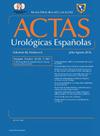Impacto del opio en la incidencia del cáncer de vejiga: revisión sistemática y metaanálisis
IF 1.2
4区 医学
Q3 UROLOGY & NEPHROLOGY
引用次数: 0
Abstract
Introduction
Opium is used recreationally and for pain relief in certain regions and has been classified as a human carcinogen by the IARC. While its use is rare in Europe and Oceania, it remains a major public health issue in other parts of the world. This study evaluates the risk of bladder cancer among opium users compared to non-users.
Methods
A comprehensive search of MEDLINE, Scopus, and Web of Science was conducted up to July 2024 to identify studies examining the link between opium use and bladder cancer. A meta-analysis was performed to calculate the pooled risk ratio with 95% confidence intervals (CI) (PROSPERO: CRD42024562623).
Results
A total of 15 studies (n = 60,149) were included. The analysis showed that opium users had a significantly higher risk of developing bladder cancer than non-users (risk ratio: 2.36; 95% CI: 1.92-2.90; P < 0.001). The risk increased with the amount of opium consumed, regardless of type or method of use.
Conclusions
Opium consumption increase the risk of developing bladder cancer by more than twofold among users. Awareness of its carcinogenic potential and public health implications is crucial. Our findings underscore the need for global prevention strategies and further research into opium-related bladder cancer risks.

鸦片对膀胱癌发病率的影响:系统综述和荟萃分析
鸦片在某些地区用于娱乐和止痛,被国际癌症研究机构列为人类致癌物。虽然在欧洲和大洋洲很少使用,但在世界其他地区,它仍然是一个重大的公共卫生问题。这项研究评估了鸦片使用者与非使用者之间膀胱癌的风险。方法对截至2024年7月的MEDLINE、Scopus和Web of Science进行综合检索,以确定有关鸦片使用与膀胱癌之间关系的研究。进行meta分析以95%置信区间(CI)计算合并风险比(PROSPERO: CRD42024562623)。结果共纳入15项研究(n = 60149)。分析显示,鸦片使用者患膀胱癌的风险明显高于非使用者(风险比:2.36;95% ci: 1.92-2.90;P & lt;0.001)。风险随着鸦片消费量的增加而增加,无论使用类型或方法如何。结论磺胺类药物使用者膀胱癌发病风险增加2倍以上。对其潜在致癌性和公共卫生影响的认识至关重要。我们的研究结果强调了制定全球预防策略和进一步研究鸦片相关膀胱癌风险的必要性。
本文章由计算机程序翻译,如有差异,请以英文原文为准。
求助全文
约1分钟内获得全文
求助全文
来源期刊

Actas urologicas espanolas
UROLOGY & NEPHROLOGY-
CiteScore
1.90
自引率
0.00%
发文量
98
审稿时长
46 days
期刊介绍:
Actas Urológicas Españolas is an international journal dedicated to urological diseases and renal transplant. It has been the official publication of the Spanish Urology Association since 1974 and of the American Urology Confederation since 2008. Its articles cover all aspects related to urology.
Actas Urológicas Españolas, governed by the peer review system (double blinded), is published online in Spanish and English. Consequently, manuscripts may be sent in Spanish or English and bidirectional free cost translation will be provided.
 求助内容:
求助内容: 应助结果提醒方式:
应助结果提醒方式:


